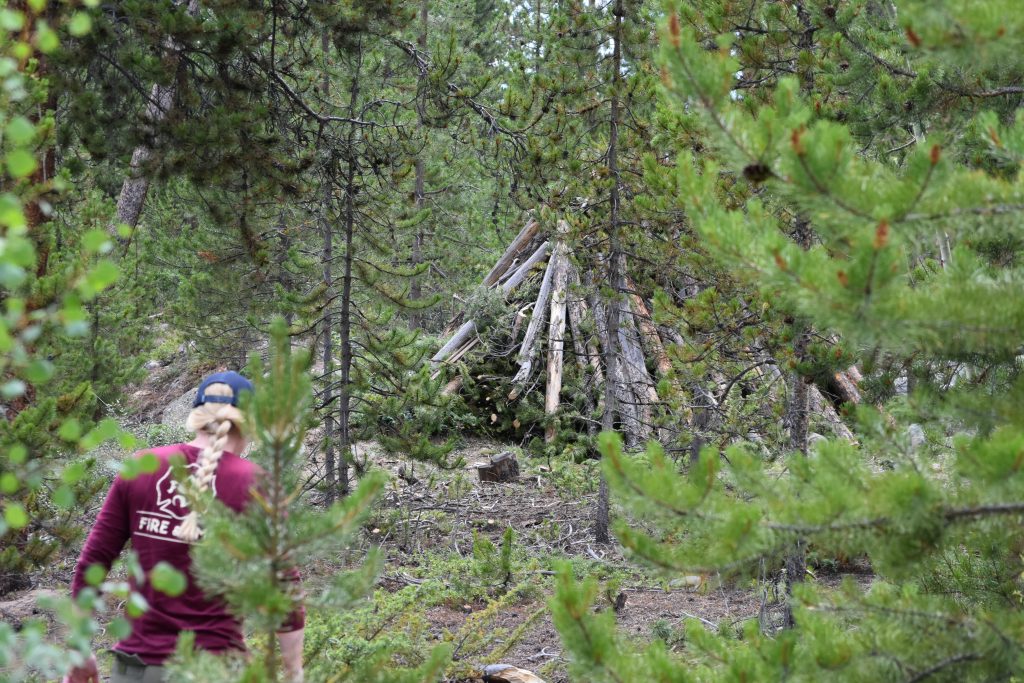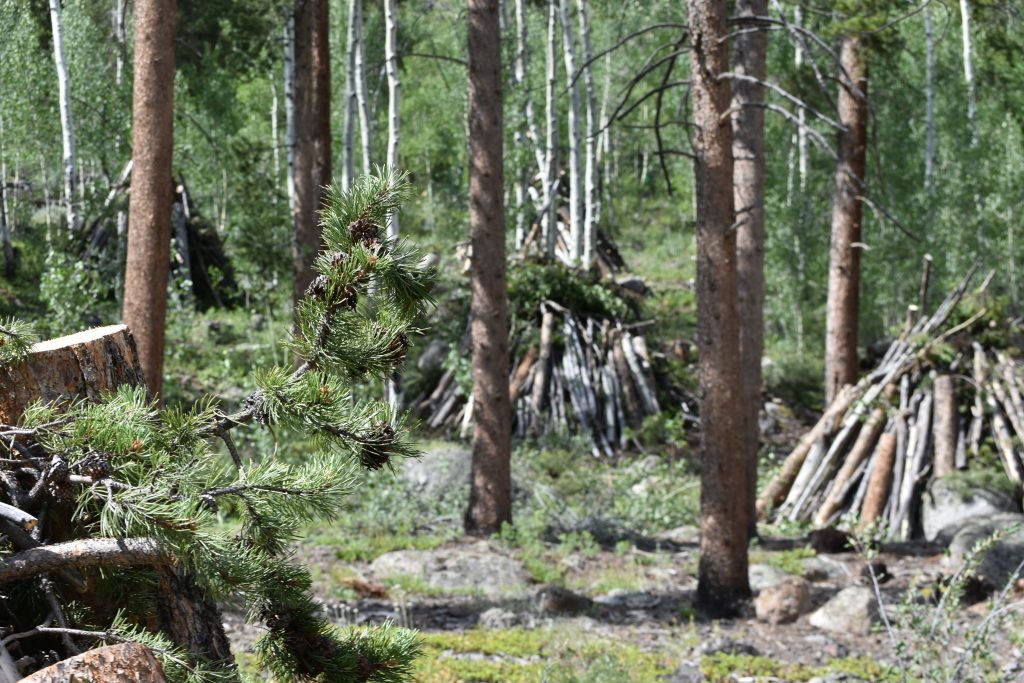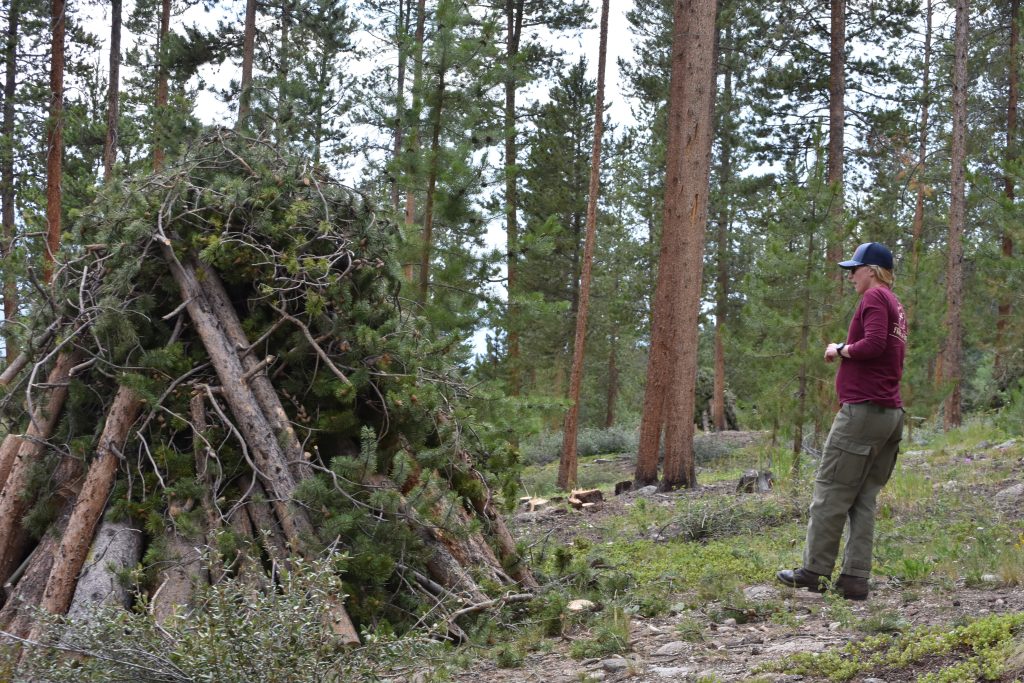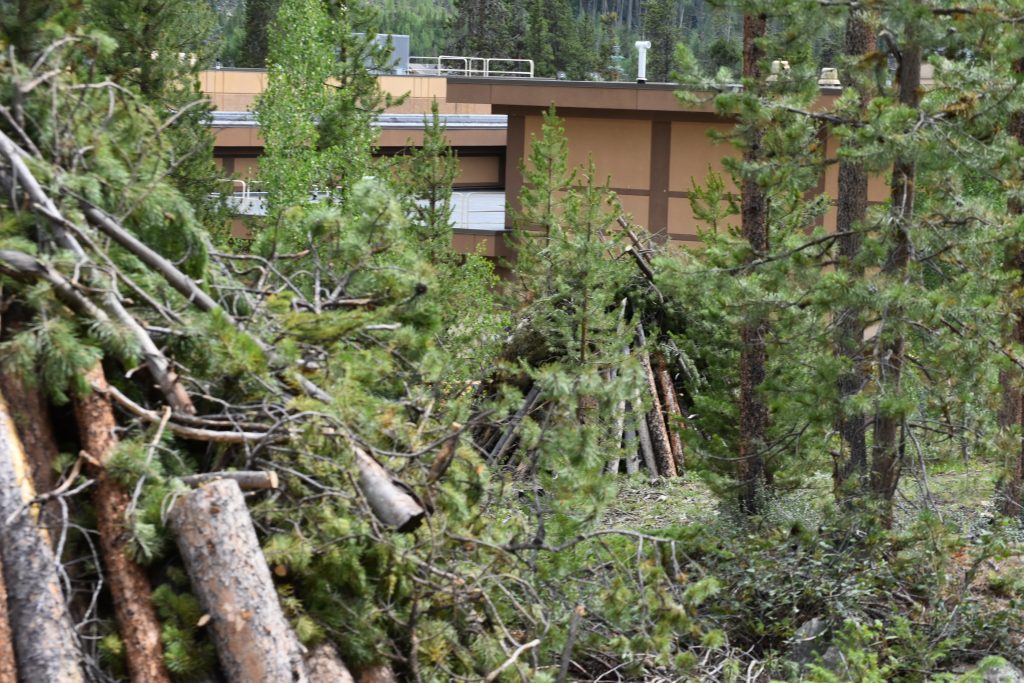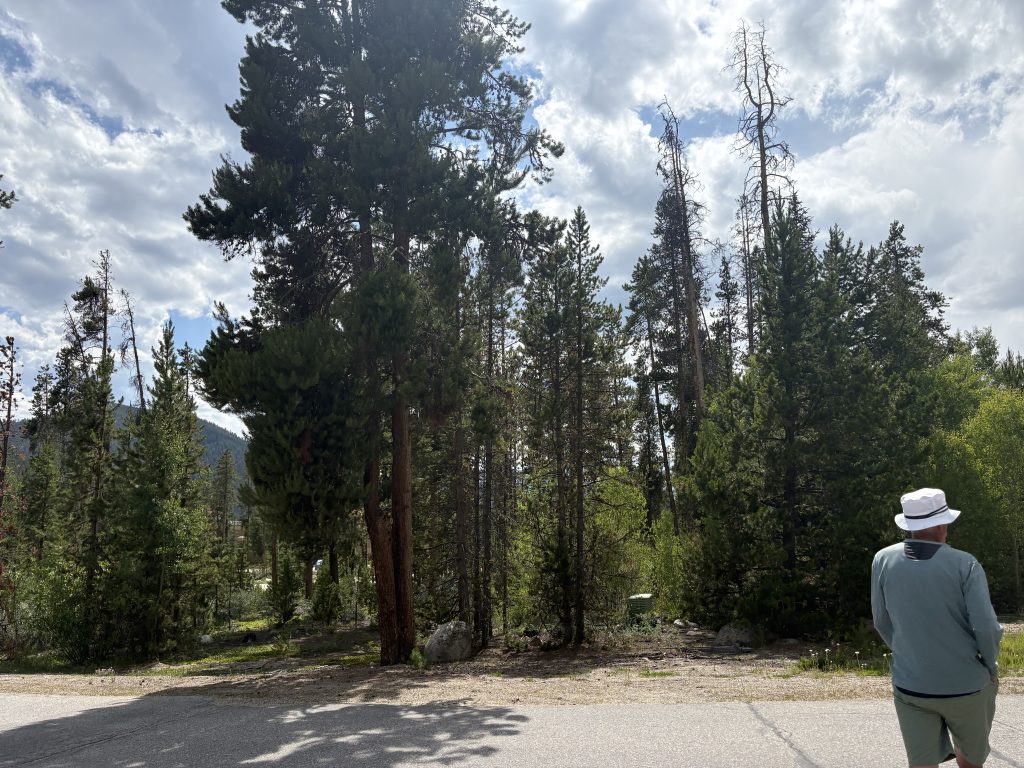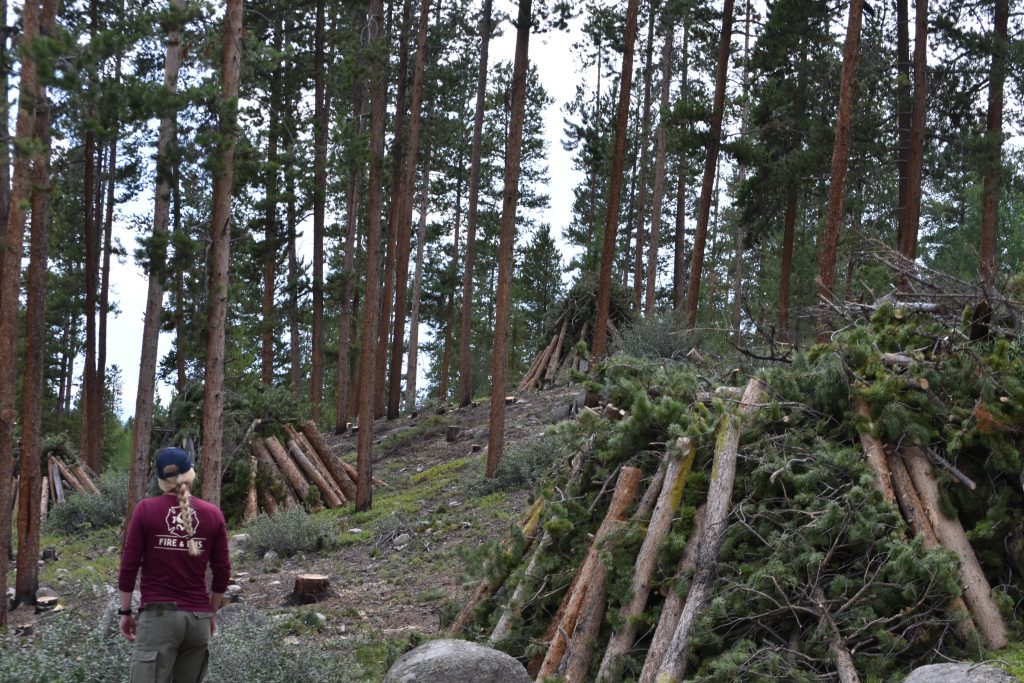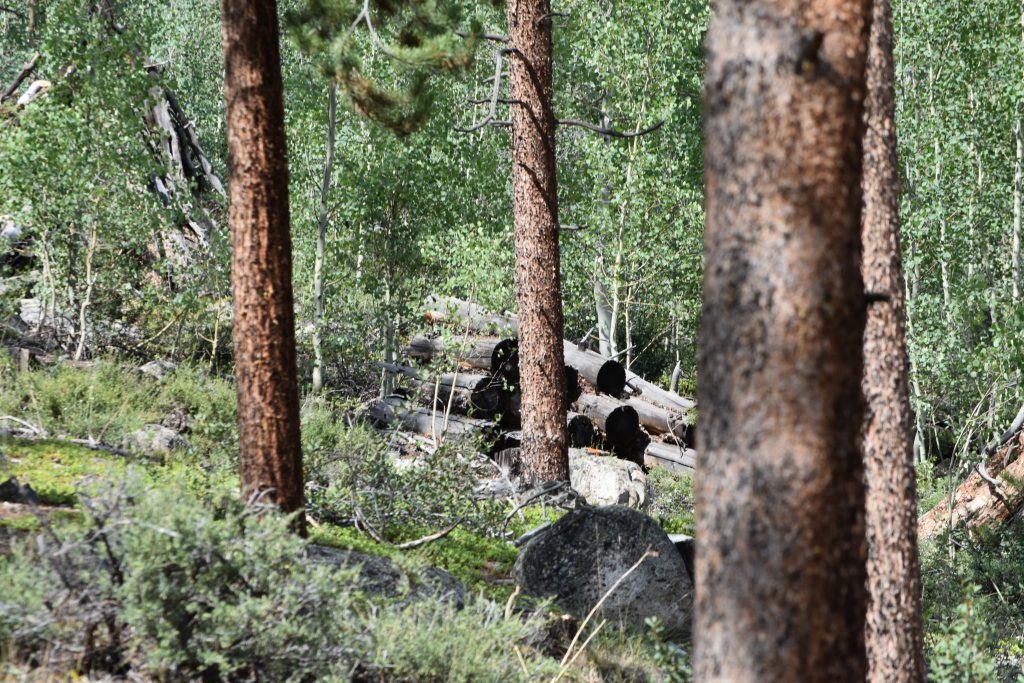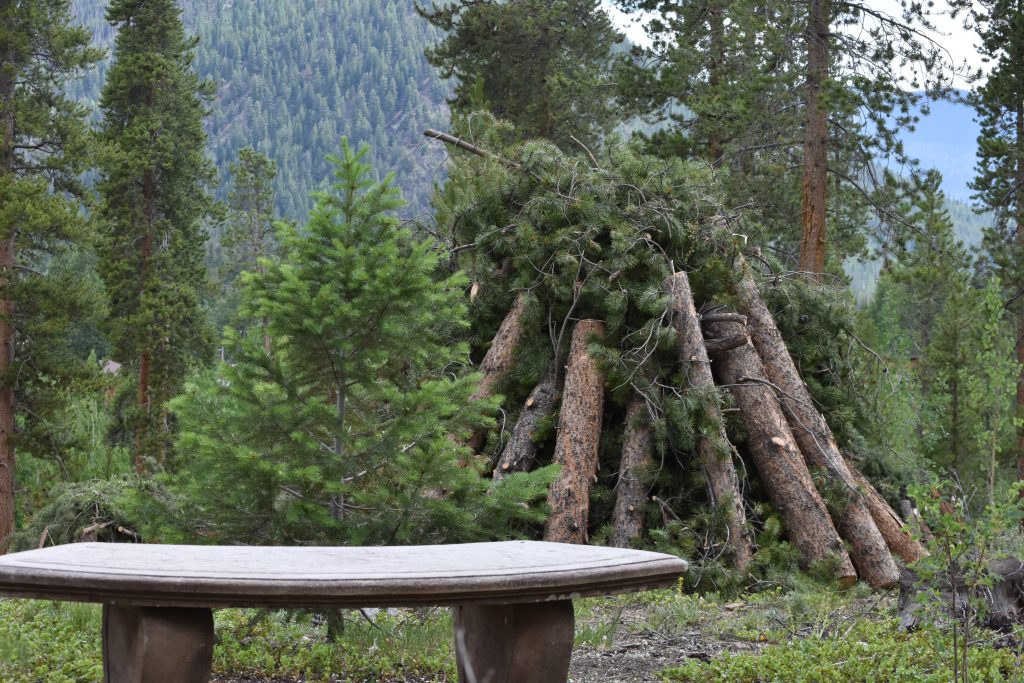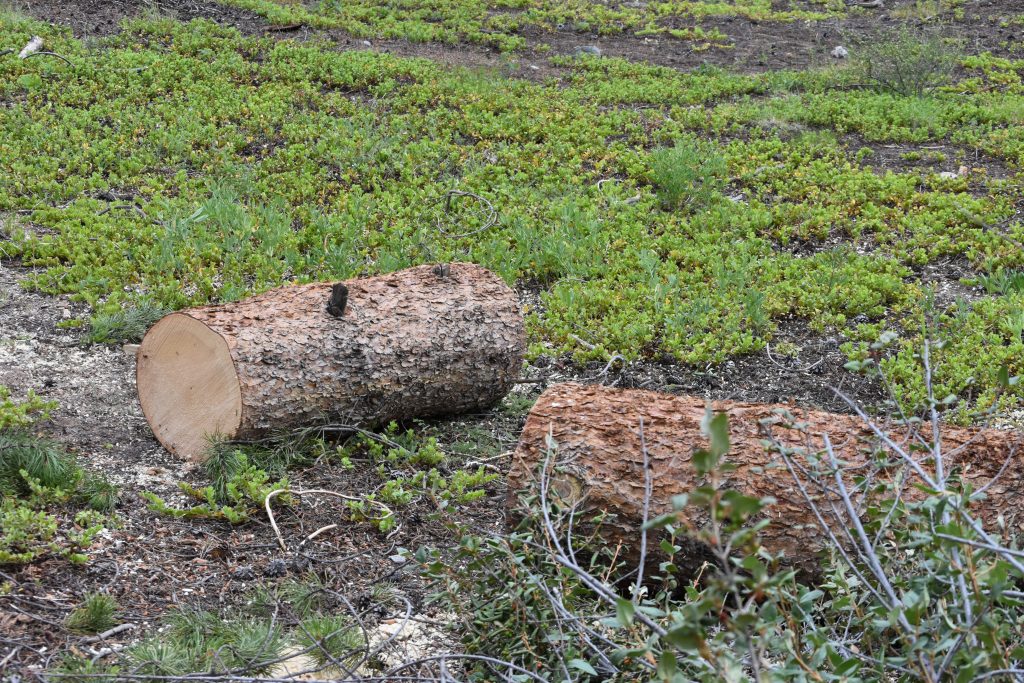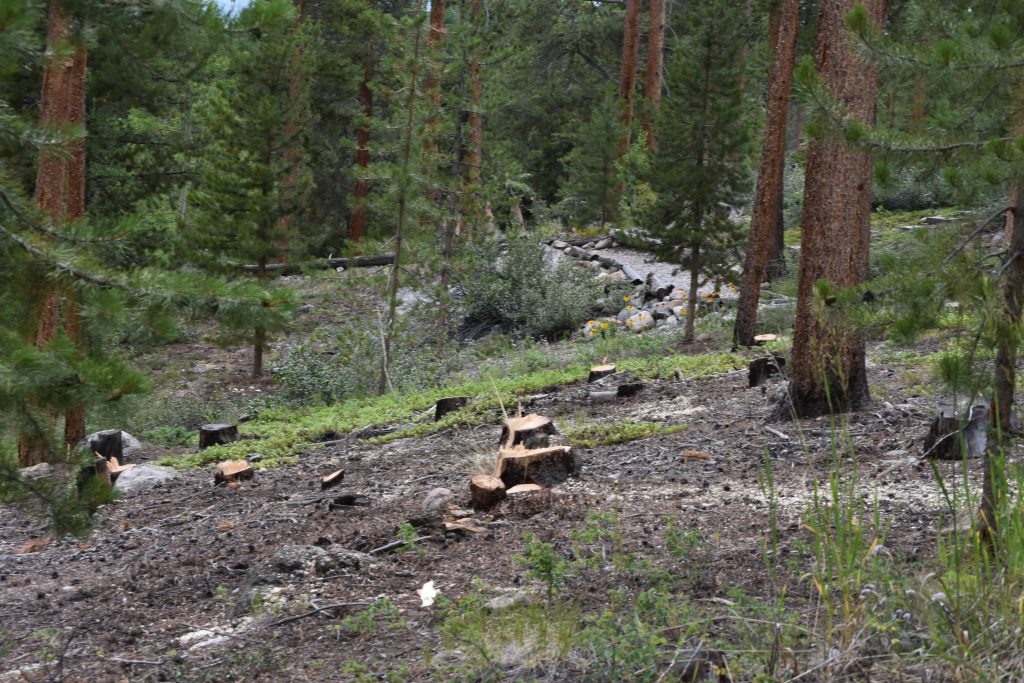Private land owners buy into wildfire mitigation projects in Colorado mountains
Private landowners have recently supported large fuel mitigation projects and homeowners associations have pursued Firewise USA certification
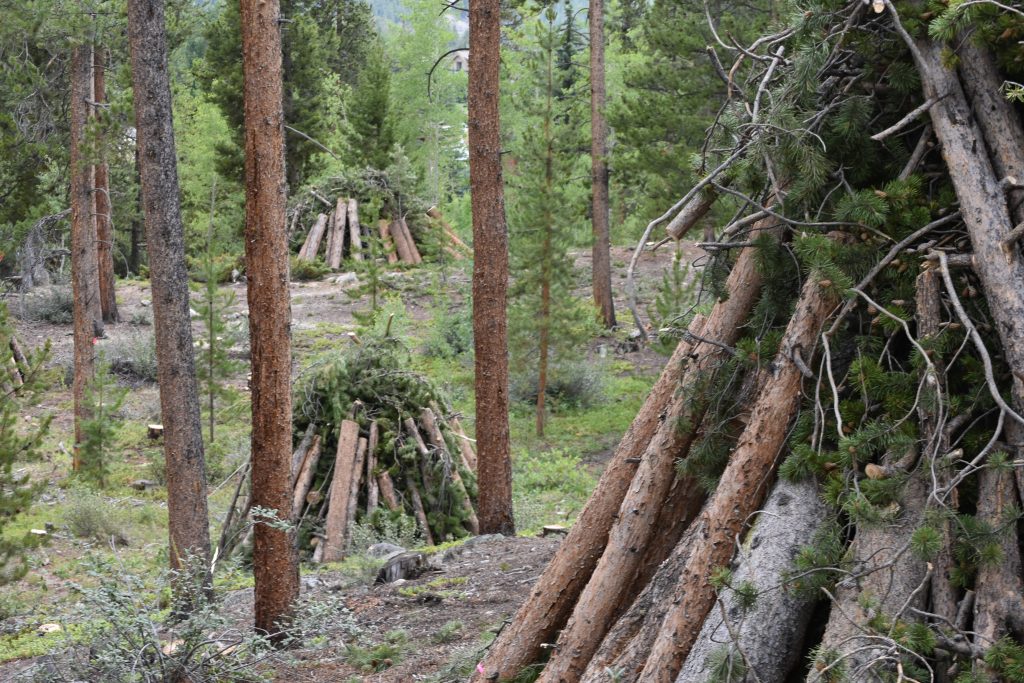
Kyle McCabe/Summit Daily News
Wildfire does not care who owns the land. That was what Hannah Ohlson, the Summit Fire & EMS wildlife division fuels specialist, said she likes about a collaborative fuel reduction project that started the week of July 14.
Three landowners near The Keystone Center on Saints John Road in Keystone collaborated with Summit Fire & EMS to work on a fuels reduction project across 30 acres of their collective land.
Ohlson said separate conversations with the town of Keystone, which is taking over land currently owned by the Keystone Policy Center, and the Sts. John Condominium Association about reducing wildfire risk sparked the idea to reduce wildfire fuels on neighboring properties. Looking at a map and seeing surrounding land owned by Keystone Resort brought in Vail Resorts.
“When we’re looking at strategic placement of hazardous fuels reduction projects, we’re really rolling out the map and saying, ‘All right, where do we think fires are likely to happen, and how can we build off of work that’s already been done?'” Ohlson said.
The Tennis Club Townhome Condominiums, west of this project area, has done “a decent amount of work,” Ohlson said.
“We’re introducing this big strip of land where we can more safely engage firefighters, should we need to defend this side of Keystone,” Ohlson said.
The three landowners split the cost of the mitigation work by acreage, Ohlson said. The Sts. John condos and town of Keystone received hazardous fuels reduction grants from the county to help pay for their acreage, she added.
Neil Chamberlin of the Sts. John Condominium Association said the grant required the group to do some noxious weed mitigation as well, meaning they had to learn what was a “good weed” and what was a “bad weed.”
“It’s a very worthwhile program,” Chamberlin said. “These days, you know, we’ve got to clean up after ourselves.”
Lindsay Hirsh, the town of Keystone’s community development director, said the project makes him excited for future collaboration between the town and the resort.
“It’s a relatively small project,” Hirsh said. “It’s fantastic from the spirit of cooperation. It’s one of many to come, I hope.”
The fuel mitigation work involves crews from Summitt Forests, an Oregon-based forestry group, cutting down dead trees as well as older living trees to reduce forest density by a certain percentage, which Ohlson said depends on the types of trees.
While in Summit County, Summitt Forests will complete two other fuel reduction projects on private lands in and around Silverthorne. A 10-acre private property near Harrigan Creek and 20 acres of homeowners association open space in Angler Mountain Ranch will have the same treatment as the properties in Keystone.
Crews create piles out of the material they cut down, placing fine fuels like small branches in the middle of larger materials like tree trunks. Ohlson said Summit Fire & EMS will burn the piles once they have sufficiently dried out by igniting the fine fuels on the inside.
“Once the fine fuels get going, they act as a kindling and ignite the bigger fuels that are harder to catch on fire,” Ohlson said. “As though you’re starting a campfire, right? You need the small stuff to get the big stuff going.”
The piles stay where they are built, in the forest, because hauling out all that material can cost a lot economically and ecologically, Ohlson said. Heavy machinery used to remove material can damage the forest, and burning the piles in place has ecological benefits.
“We can keep some of the carbon stores on the landscape,” Ohlson said. “We can create micro disturbances in the form of those small-pile burn scars that create more landscape heterogeneity, encourage that landscape biodiversity.”
Pile burnings happen during the winter to minimize the risk of the fires spreading to the trees left standing. Because there needs to be snow on the ground for the burning to be safe, Ohlson said, piles will cure, or sit drying out, for years.
Crews try to build piles outside of the drip lines of other trees, Ohlson said, but even if a fire scorches a tree above it, that does not pose a major risk of the fire spreading.
“We’re not in fire season when we’re burning them,” Ohlson said. “If we get a little bit of canopy scorch, it’s contained to that single tree, and it usually just crisps some of the edge branches.”
Ohlson wrote in an email that many tree species are adapted to regenerate after moderate disturbances, like having some of their branches burned.
This sort of fuel reduction work has historically taken place on public lands more often than private ones, Ohlson said. She said a few factors have contributed to an increase in interest from private land owners, including rising insurance costs.
Chamberlin said the Sts. John Condominium Association feared it would lose its insurance because of high wildfire risk, so it reached out to Ohlson, who did an assessment of the property.
“She took pictures — she basically analyzed and said, ‘These are the things you need to get done. You know, you’re not in that bad of shape,'” Chamberlin said. “She saved our butt. She really did.”
Ohlson said public awareness of wildfire risk and management has increased private landowner interest as well. She said landowners feel more empowered to mitigate their risk and the public has less aversion to prescribed burns than in years past.
Summit County’s fire districts, Summit Fire & EMS and Red, White & Blue Fire Protection District, have both increased their capacity to do pile burning projects over the last five years, Ohlson said, by creating wildland divisions that focus on wildfire preparation, mitigation and response.
“All of our (operations) crews, throughout both of those fire districts, are cross-trained in wildfire,” Ohlson said. “But we hadn’t had divisions within those departments that were specifically committed, full-time, year-round, to doing wildfire work.”
Firewise risk mitigation
Concerns about fire risk affecting insurance costs led the homeowners association of Cabin Creek, a condominium complex in Frisco, to look more into risk mitigation.
Dave Hicks, the homeowners association president and property manager, moved to the complex in 2021 and, as he learned about wildfire risk in Colorado’s mountains, got the board’s permission to have Summit Fire & EMS do a free property inspection. The fire department suggested trimming trees and bushes and cleaning up the property’s defensible space.
Sometime in 2022, Hicks said, the association’s insurance carrier asked to do a fire risk inspection of the property because the renewal window was approaching. The then-property manager thought it could be a problem, so the association did some tree trimming.
“That was a little rocky, in the sense that it was not a unanimous, fully-supported decision by all of the homeowners, but it was a majority,” Hicks said.
The tree trimming and fire department inspection helped influence other homeowners to take wildfire risk mitigation more seriously, though. Hicks said that, over the next few years, he became the board president and helped convince the homeowners to pursue Firewise certification.
The certification, granted by the National Fire Protection Association’s Firewise USA program, recognizes communities that have taken steps to protect their neighborhoods from wildfire.
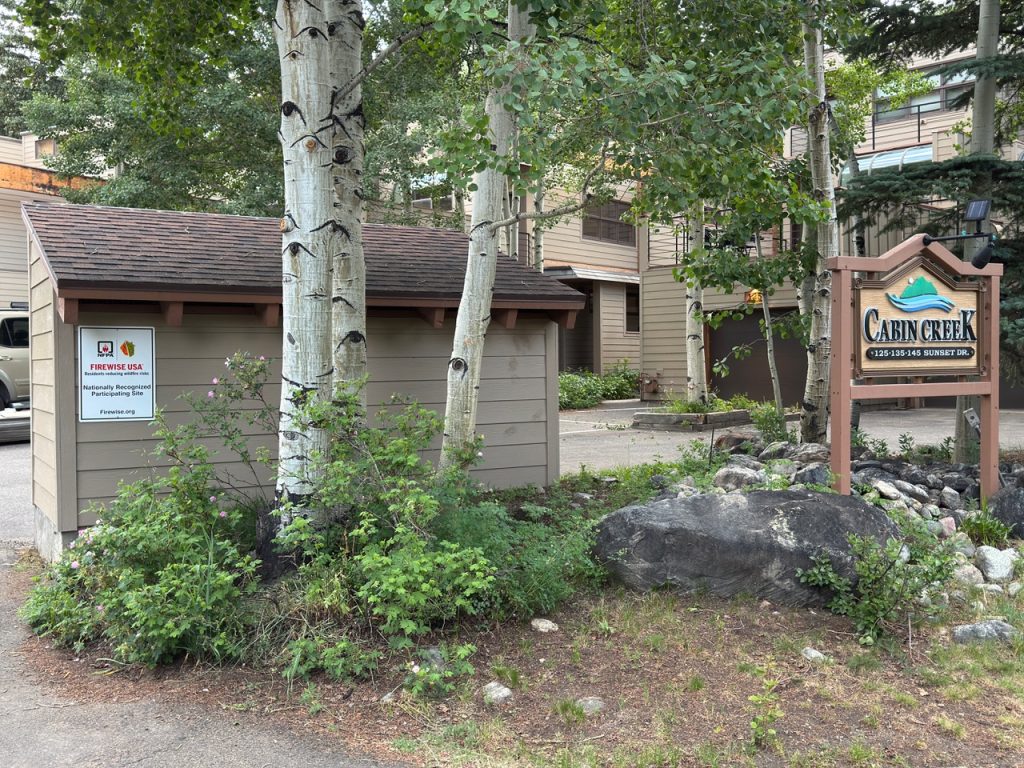
In 2023, Cabin Creek followed another one of Summit Fire & EMS’ recommendations and decided to install fire resistant siding on its buildings. Hicks said some homeowners pushed back on replacing the buildings’ cedar siding with fire resistant material, but they were convinced by a video that showed how quickly different siding types caught fire.
“You might as well have lit a match to flammable paper on the cedar siding,” Hicks said. “It goes up very, very quickly. Like in a minute, it’s on fire.”
The fire resistant siding that the association opted to install, Hicks said, only had a black mark on it after being exposed to flames for 10-15 minutes in the video.
Cabin Creek received Firewise certification in December 2024, but Hicks said the work does not end there. The association had to submit a five-year plan to Firewise USA, outlining the mitigation work they intend to do in the future, in order to receive certification. Hicks said the process takes time and effort.
“My plan was rejected twice for corrections,” Hicks said. “They didn’t want all of the history and what we had already done. They wanted to know what we were going to do more moving forward.”
With all the work Hicks and the association have done, he said the group’s insurance rates have not increased drastically. The association has had a good policy for several years, he said, and the mitigation work has helped the group keep it.
“It was pretty apparent that this was something we needed to do to just protect our buildings more,” Hicks said. “And hopefully it would keep our rates down and keep us insured.”
Cabin Creek’s insurance renewed in January, before the new siding had been completed, and the rate went up 6%, Hicks said.
According to the Firewise USA website, Cabin Creek is the only community in Frisco with the certification. Hicks said being the first in the town to pursue certification presented another challenge in convincing homeowners to support it, but now he knows of two other Frisco homeowners associations interested in certification.
“Now that we’ve got the sign, got the certification, they’re saying, ‘Gee, how’d you do that?'” Hicks said.

Support Local Journalism

Support Local Journalism
As a Summit Daily News reader, you make our work possible.
Summit Daily is embarking on a multiyear project to digitize its archives going back to 1989 and make them available to the public in partnership with the Colorado Historic Newspapers Collection. The full project is expected to cost about $165,000. All donations made in 2023 will go directly toward this project.
Every contribution, no matter the size, will make a difference.

